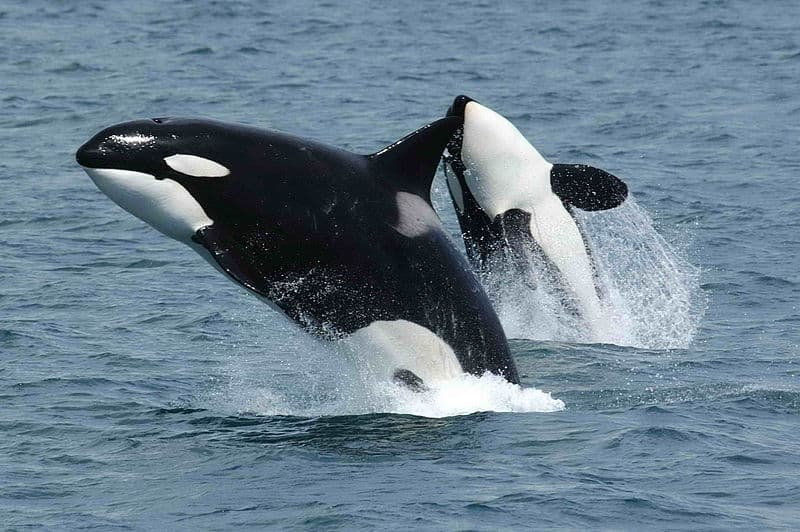
Orca Facts
- The term of Orca names an unforgettable species of toothed whale that many refer to the species as killer whales. This breathtakingly beautiful, but deadly, marvel of Nature also forms the largest extant species of the oceanic dolphin family.
- The powerful creature thus remains regarded as an apex predator in every ocean, much like the Great White Shark. Due to various reasons related to its movements, the IUCN currently lists its conservation status as Data Insufficient.
- That highly uncertain status appears on the organization’s Red List of Threatened Species. This also occurs because many scientists believe that the behavior of various local populations may indicate the existence of two or more subspecies of Orca.
- Nonetheless, many individuals currently believe this magnificent creature to be facing various threats to its continued existence. Lamentably, one of these perils continues to be that of becoming an accidental bycatch in commercial fishing.
- Another threat, however, continues to be the danger of encounters with boats. That holds true of both fishing and recreational forms. Its greatest threat, however, most likely comes from the tragic ongoing effects of climate change.
Related Articles
Orca Physical Description
Perhaps most notably, the adult Orca possesses a very distinctive color pattern. and is therefore rarely confused with any other creature, even at a distance. Typically, the animal presents black on the back with sides and chest a bright white in color.
This magnificent animal also displays a white patch present behind and above the eye. Its body shape is heavy and robust. A small degree of sexual dimorphism exists as well. The male Orca averages between 20-26 ft (6-8 m) in length, and about 12,000 lb (5,443 kg) in weight.
Females, however, develop somewhat smaller than that in overall size. In point of fact, these reach maturity with an average length of 16-23 ft (5-7 m), and an average weight of 8,000 lb (3,629 kg). The dorsal fin of the male is also twice the size of that of the female.
- Kingdom: Animalia
- Phylum: Chordata
- Class: Mammalia
- Order: Artiodactyla
- Family: Delphinidae
- Genus: Orcinus
- Species: O. orca
Orca Distribution, Habitat, and Ecology
Further augmenting its status, the breathtaking Orca has an extraordinarily broad range of habitation. That’s due to the fact that it inhabits every ocean on earth, from tropical seas to the Arctic and Antarctic areas, and has no known natural predators.
Due to its great range and global distribution, an exact estimate of its numbers is impossible. However, the general estimate is that there are at least 50,000 surviving Orca individuals at this time. But that number could change with new informtion.
Though the species remains present globally, the greatest concentrations exist in higher latitudes and coastal regions. The largest population concentration also lives in the region of the Antarctic. This fact often surprises those new to knowledge of it.
Sometimes referred to as the wolves of the sea, the Orca typically hunts in packs. Its favorite prey varies rather greatly, with specialization occurring between local populations. Overall, its food primarily consists of fish, birds, and various marine mammals.
That includes species such as baleen whales, other toothed whales, seals, sea lions, walruses, and at times sea otters. In addition, in the wild, the majority of Orca specimens observed appear to live as long as 90 years. In captivity, sadly, individuals die much younger.
Species Sharing Its Range
Check out our other articles on 6 Extraordinary North American Reptiles, Spade Toothed Whale, Cocos Island, Atlantic Spotted Dolphin, Picasso Bug, Indian Giant Squirrel, Great Potoo
